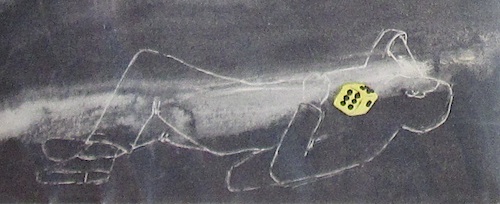CHARACTERS: Mrs. Pocock, Colonel Charlock, Angela Lake, Oliver Verdon and of course Professor Plumb have all been invited to Dr. Wight’s hotel apartment for a party. When all are present they are instructed to play a game of Clue® while their host readies himself. A few hours later poor Dr. Wight is found in the hallway closet with a bashed in head. It doesn't take long for the guests to see the similarities in their names to the roles they were assigned in the game. And the fact that the cards said that Colonel Mustard did the murder in the conservatory with the candlestick. Dr. Wight has no conservatory but he does have a consulting room and it seems that a candlestick is missing from the fireplace mantel in that room. Someone is having a perverse laugh at the expense of these apparent strangers. Did Colonel Charlock (check your botany catalogs for the connection) kill Dr. Wight? Or is he being framed? It takes the combined efforts of hotel detective Burt Charles and Detective-Inspector Harris to uncover the reason the strangers were brought together and to track down the villain behind the deadly games.
INNOVATIONS: Clearly, the entire novel is an innovation having used the popular board game as its inspiration for a devilishly clever murder mystery. After a brief and superfluous section about who had which cards during the play of the board game the story gets very interesting as everyone attempts to find out what the guests have in common, why they were invited to Dr. Wight’s, and why they have been targeted by a mad killer.
For a while it seems that Professor Plumb will become the real detective of the novel since he does quite a bit of pontificating and armchair sleuthing on his own. Overall, there is some good detection and the uncovering of all the various secrets is told with crisp dialogue and nicely controlled suspense. Several floor plans add to the nostalgic atmosphere and may a elicit a smile when the reader realizes that the hotel room where the murders take place is a near duplicate of the Clue® board game with only the bedroom and Wight's consulting room standing in for other rooms in the game. There are, however, no secret passages. Thankfully.
The finale caught me completely off guard and I have to applaud Barker for some excellent misdirection. I like being surprised when I always think I never will be. The story has an element of the impossible crime subgenre as one of the murders seems to have been committed by an invisible intruder. All the guests were in the company of at least one other person when the murder was done and no one could have got into the locked hotel suite from outside.
 |  |
THE AUTHOR: Ronald Barker was born in Scotland and raised in England. After a brief career in business and then a stint in the British Army medical corps he entered the publishing field in 1947. At the time of the publication of Clue for Murder he was the president of the British Publishers Association. He was commissioned by Unesco to write a study of the international book trade and two of those volumes focused on the trade between the UK and African nations. Using the pseudonym "E. B. Ronald" he wrote a handful of detective novels modeled after the American hard-boiled private eye novel but all of the books were set in England. Clue for Murder (1962) was his sixth mystery novel and the only one published under his real name. I've found a copy of one of the those E.B. Ronald books about some murders in a pub and will be reviewing it soon. Supposedly there is another locked room murder in that book.
One mystery never explained: though the story is set in England and written by a British man why are they all playing on a Clue® game board and not a Cluedo board? I guess it was altered for this side of the Atlantic. I'd be interested to know if the UK editions of this book refer to Cluedo instead.
 |
| Detail from the rear panel of the 1st US edition DJ |


This seems a bit hard to find sadly and I can only spot US edition - as you say, in the UK it would make no sense unless you referred to the game as Cluedo. If I ever find a reasonably priced edition chum, I'm on to it!
ReplyDeleteTry a library, Sergio. This was a serendipitous discovery at my local library. It happened to be on the shelf above a book I was looking for and I pulled it out on a whim. When I saw the frontispiece which is a black and white picture of the Clue board I guessed that the game was going to figure in the plot. Obviously I had to read the book to find out just how it was worked in. It's very short and easily read in less than a day.
DeleteWeeks ago when I was preparing this post I found five copies for sale on the bookselling websites. Now there are only three! Some visitors to this blog must've bought two of them after reading this post. Happens all the time, my friend. Wish I could collect a finder's fee for every book I've sold since this blog was started.
Now this sounds mighty good, John. Never heard of it either, but no surprise there. :)
ReplyDeleteThe UK edition also refers to ‘Clue’. It has a US Library of Congress catalogue number on the copyright page. The only discernible difference from the US edition is the UK price (12s 6d net) to the bottom front flap.
ReplyDeleteThanks for that news. Guess it was first published in the US. Was the board game also sold as Clue (R) in the UK?
DeleteCluedo in the UK.
Delete